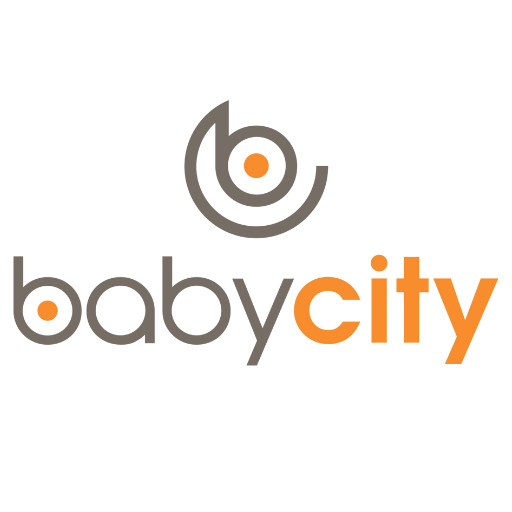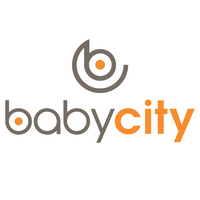Babywearing made easy: how to find the best carrier for you

Babywearing has been practiced around the world for centuries, and for good reason! It offers parents just like you, a convenient and comforting way to bond with your little one, while allowing you the freedom to go about your daily task's hands free. Whether you're grocery shopping, going for a walk or simply enjoying newborn cuddles, the right baby carrier can make all the difference.
With so many options available, how do you choose the right one? Here’s what to look for and how to wear your baby safely.
What to look for when choosing your baby carrier
Finding the right carrier depends on comfort, safety and ease of use. Keep these key features in mind:
-
Hip-healthy design
A good carrier supports your baby in an ergonomic "M" shape, where their knees are higher than their bottom. This position supports healthy hip development and helps reduce the risk of hip dysplasia, especially in the first six months (International Hip Dysplasia Institute, n.d.). Avoid carriers that place all the baby's weight on their crotch with their legs hanging straight down, as carriers with this position may put unnecessary strain on the hips and increase risk of misalignment (Norholt et al., n.d.).
-
Comfort for both you and baby
Whether you choose a wrap or a structured carrier, it should feel supportive and distribute your baby's weight evenly to ensure comfort for extended wear. Look for features like adjustable straps, wide waistbands, or soft, breathable fabrics that help with weight distribution and overall fit. Make sure it provides proper head, neck and body support for your baby.
-
Carrier longevity
Consider about how long you want to use your carrier. Some options, like soft-structured carriers grow with your baby and can be adjusted and used from newborns through to toddlers, offering long-term use. While wraps are perfect for the early months, they may not offer the same extended support as structured carriers.
-
Grows with your baby
Ensure the carrier is suitable for your child's age, check the recommended age and weight of the carrier, some may need additional infant inserts based on your baby’s age and size.
-
Test the fit
If possible, test the fit of one or two different carriers to ensure it’s the right fit for both you and your baby. Different carriers may fit differently depending on your body type and your baby’s size. Make sure it’s easy to use and comfortable for both of you, especially if you plan to use it for extended periods.
T.I.C.K.S - safety checks when babywearing
No matter what style of carrier you choose, safety is always a first priority! Always follow the T.I.C.K.S. rule:
-
Tight: Baby should be snug against you with no loose fabric.
-
In view at all times: Always see your baby’s face. Keep their mouth and nose clear of the carrier fabric, your clothes or their own chest.
-
Close enough to kiss: Baby’s head should be within easy kissing distance.
-
Keep chin off chest: This keeps airways clear.
-
Supported neck and back: Baby should be held securely in a natural position and their head should be supported especially in the younger months when they require that neck support.
((Norholt et al., n.d.; Whānau Āwhina Plunket, n.d.)
Types of baby carriers
There’s no one-size-fits-all when it comes to babywearing, and it does come down to your own personal preference. The best carrier for YOU is one that feels comfortable on, is safe, and supports your baby ergonomically. Here’s a breakdown of the different styles: Wraps
Wraps
Wraps are soft and stretchy, providing a snug, familiar womb-like environment, perfect for newborns. Lightweight and easy to pack, they promote bonding and are ideal for keeping baby close in the early months. Popular options include Moby wraps or the Boba Stretchy Wrap, suitable from newborn to 6 -9 months*.
Pros:
-
Newborn-friendly
-
Versatile & adjustable, to be used in multiple ways to suit different carrying positions.
-
Custom fit for different body shapes and sizes.
Cons:
-
Requires practice to tie correctly.
-
Less support for older/heavier babies.
These carriers combine the softness and cosiness of a wrap with the ease of a structured carrier. With built-in support and simple buckles, options such as the Boba Bliss or Ergobaby Embrace offer a hassle-free babywearing experience. Designed to carry from newborn to 12 months*.
Pros:
-
Easier to use than wraps and provides more support.
-
Versatile carry options.
-
Great weight distribution.
Cons:
-
Limited longevity.
-
Less support than soft-structured carriers.
The most popular choice for parents as they offer long-term usability. Structured carriers feature padded shoulder straps, a wide waistband, adjustable panels for maximum support and buckles to secure. They are quick and easy to put on – no need to master the art of the baby wrap - simply clip in and go! Brands such like Ergobaby, Baby Bjorn and Mountain Buggy® offer versatile options and are often suitable from newborn to 48 months.
Pros:
-
Easy to use.
-
Supportive & ergonomic support.
-
Versatile carry options.
-
Long-lasting.
-
Great for active parents.
Cons:
-
Sometimes they can be higher priced.
-
A few more adjustments may be needed to fit.

Baby slings
Ring slings are single-shoulder carriers made from fabric threaded through two rings, creating a snug fit for your baby. Worn across the wearer’s shoulder and around the waist, they can carry your little one on your front or hip. While they’re easy to adjust for a comfy fit, they may not offer as much support as wraps or structured carriers. Slings should always be worn with baby in an upright position, and they are one-size-fits-all for both parents and babies.
Pros:
-
Quick & easy to use.
-
Great for Breastfeeding.
-
Lightweight & breathable.
-
Good for newborns & hip carrying.
Cons:
-
One-sided support: Puts all the weight on one shoulder, resulting in uneven weight distribution.
Designed for toddlers who can sit unassisted, backpack carriers are perfect for outdoor adventures. They provide sturdy support for little ones who like to walk but may still need to be carried when tired. Featuring a rigid frame, padded and adjustable harness straps and usually a wide waist belt, these carriers help evenly distribute weight for comfortable extended wear. Popular options include the phil&teds® parade™ and phil&teds® escape™.
Pros:
-
Ideal for toddlers.
-
Comfortable for long walks & hikes.
-
Even weight distribution.
-
Storage space for essentials.
Cons:
-
Not as compact or easy to fold away as other wraps and carriers.
-
Not suitable for newborns.
-
Can be difficult to put on alone.
Babywearing safety tips
The International Hip Dysplasia Institute recommends inward-facing carrying until at least 12 months old, as it provides better support for hip development. During the first six months, a baby’s hips develop rapidly and inward facing engages your babies inner thigh muscles, aiding in the growth, VS outward-facing positions which may not offer the same level of support (International Hip Dysplasia Institute, n.d.). While head control is often used as a milestone for outward-facing carrying, hip development is still ongoing (Norholt et al., n.d.)
Always check your baby’s positioning and adjust as needed. Remove or reposition baby immediately if you notice:
-
their face is covered, or chin is tucked in;
-
their head is turned unnaturally to the side;
-
they are in a tight 'C' position;
-
wheezing or grunting or laboured breathing;
-
their skin appears a bluish or dusky;
-
they seem restless, fussy, or squirming uncomfortably.
Other safety considerations:
-
never shake, bounce or run while wearing your baby;
-
never use a carrier while in a car—babywearing does not replace a car seat;
-
regularly inspect fabric, seams and buckles for wear and tear;
-
be aware of baby’s reach, especially in backpack carriers;
-
dress baby appropriately for the weather and apply sunscreen as needed.
(Babywearing Aotearoa, n.d.)
Find your perfect fit at babycity®
With so many babywearing options available, choosing the right one can feel overwhelming—but we’re here to help!
Visit babycity® in-store for a personal consultation with our babywearing experts. We’ll help you find the perfect fit, ensuring comfort and safety for both you and your little one.
Browse our amazing range of wraps, slings, and structured carriers online or in-store today!
*Age ranges are approximate. Always check your manual for the manufacturer’s weight recommendations.
References
Babywearing Aotearoa. (n.d.). Safety. https://www.babywearingaotearoa.co.nz/safety/
International Hip Dysplasia Institute. (n.d.). Baby wearing. https://hipdysplasia.org/baby-wearing/
Norholt, H., Price, C., Phillips, R., & McNeilly, J. (n.d.). Babywearing practices and effects on parental, child physical and psychological health. International Hip Dysplasia Institute. Retrieved from https://hipdysplasia.org/wp-content/uploads/2022/07/AJPN.MS_.ID_.555876.pdf
Whānau Āwhina Plunket. (n.d.). Safe babywearing. https://www.plunket.org.nz/caring-for-your-child/safe-sleep/safe-baby-wearing/







Leave a comment